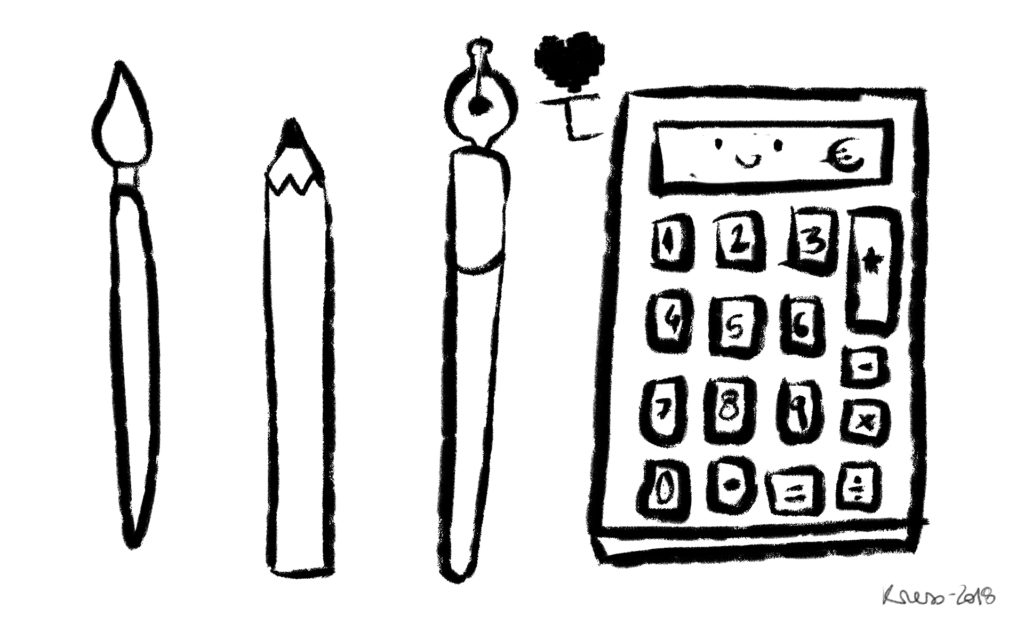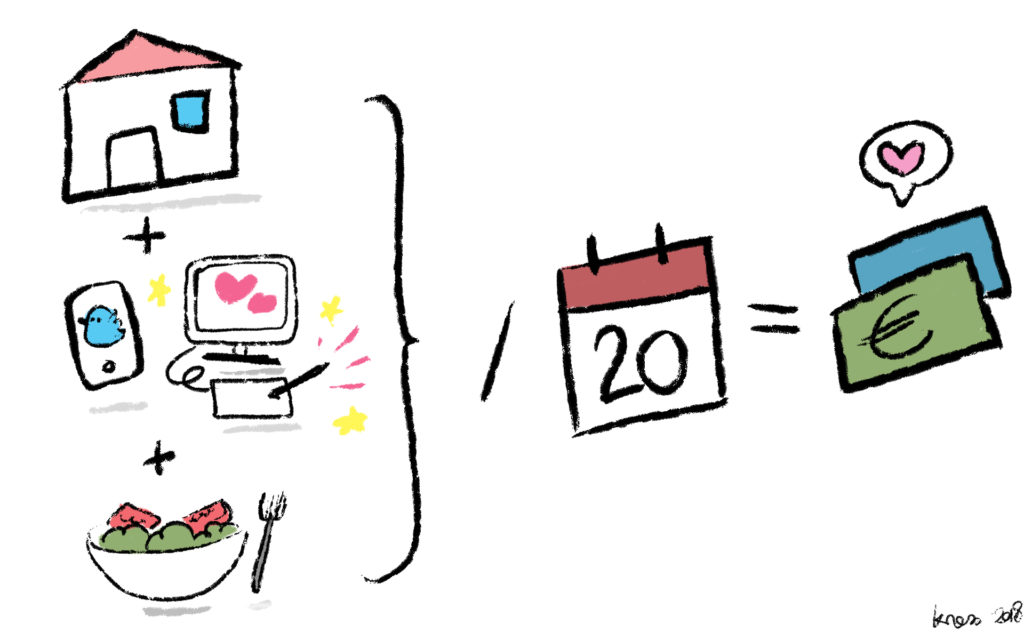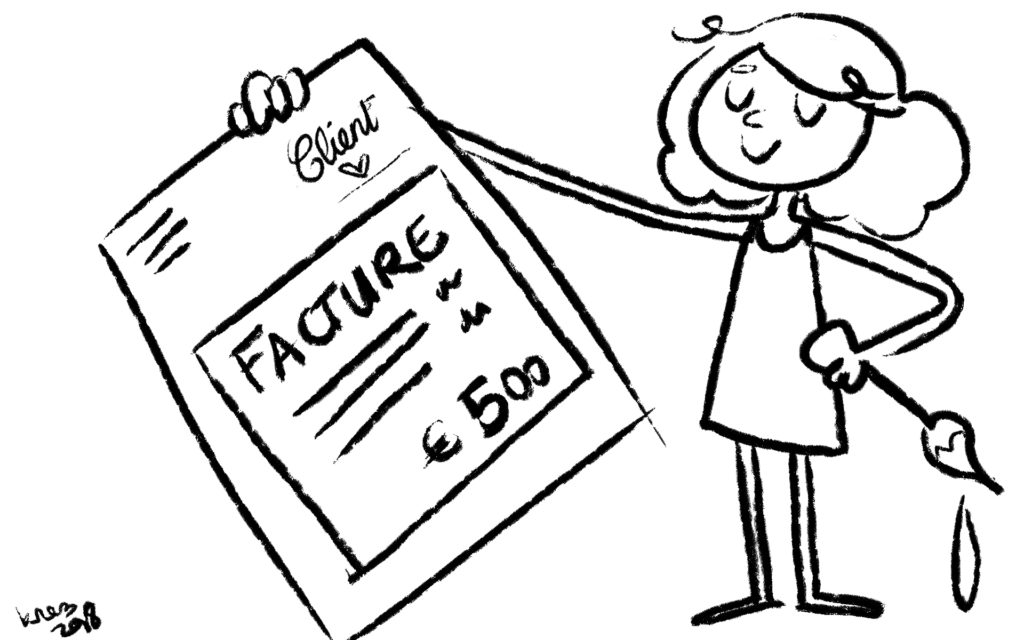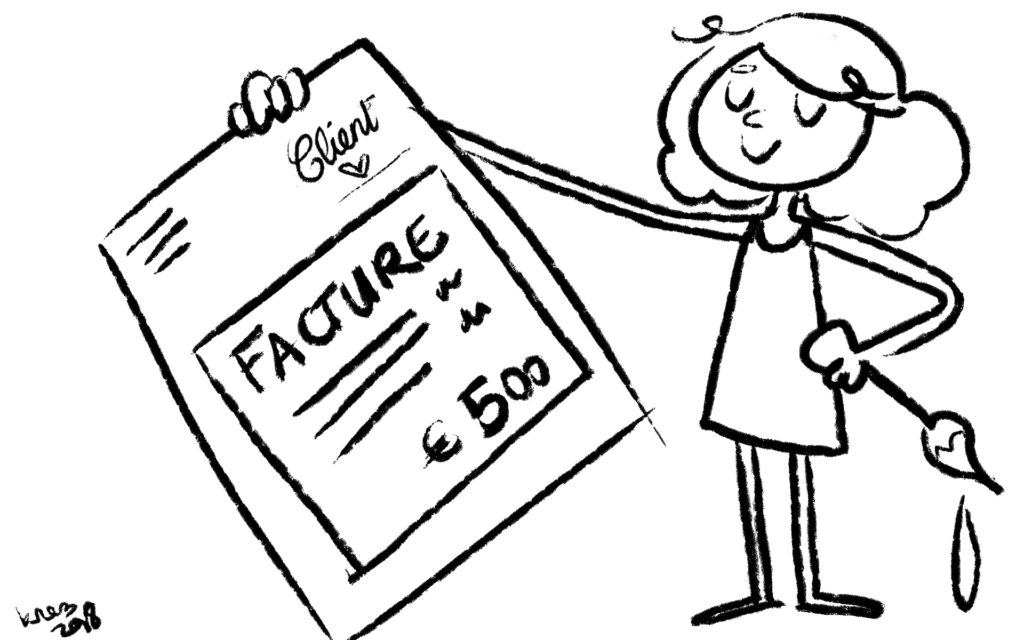Illustration Blog
Illustration pricing advices
It’s been a long time since I wanted to write (and translate) a piece about illustration pricing. This illustration pricing guide took a more advanced form during a course for Masters Degree in Illustration students. Before that, I showed some of this presentation to several groups of students, to freelance artists, on social networks, by email. So I like to think this is kind of a proofed method, but of course you’ll find many illustration pricing advices out there.
How to price your art
I’ll try and answer the following question: how much should I charge for a drawing from a very practical stand point. It will prove useful for any beginner artist or anyone who doesn’t know where to start. If you’d like to earn a living with your art : read the following article in full. The following piece is about professional clients: publishers, agencies, businesses etc. For private commissions where no commercial use is intended, it is (slightly) different. I only talk about basic rates, once your clientele and reputation are established, you will increase your rates on a regular basis (once a year is good).

So, HOW MUCH SHOULD I CHARGE NOW ?
I know you expect a number here. How much do I charge my drawings? 300 Euros. Ok but 300 euros for what ? The hour, the drawing, the page, how many square centimeters, is it a colored illustration, a digital one, natural media ? We quickly realize how vast the possibilities are. And the answers will vary, a lot. And yet, most of the time, the question is asked, without any more details (by new illustrators, or new clients). You will find many ressources that answer this question in a more or less precise way. So I will try to give a complete illustration pricing advice : how and how much I charge, to whom, and why. I see some of you already scrolling in search of the numbers eh ^^ reading about the context will help you understand rather than just applying a formula.
1- The artist hourly rate
Let’s start by finding out your minimum hourly rate. This rate will allow you to survive. This is not what you should charge, it is your minimum earning. You should never work below this rate. *NB : this simple math works for France, but your country might have different taxes so, you’ll want to use your own numbers here* Why do you prefer not to work below a certain amount?
- You’re wasting your time
- It drives prices down for everyone
- You spend your energy for nothing
- You have no reason to gift your time and energy to strangers (who will often make money off of it)
- Exposure or publicity are not admissible forms of payment ever.

Quick sum:
- Rent +
- Electricity + Internet + Heating + phone + other subscriptions +
- Car and fees if you have one (take gas + insurance + annual maintenance) +
- Food +
- Leisure +
- Etc
You need to get more for:
- Taxes (premises, income)
- Your training
- Retirement
Example of illustration pricing
Now that you have made your calculation, depending on your country and your lifestyle, you should have a monthly figure between 1500 and 2500 euros for example. Will you have to charge 2500 euros per month? No! Otherwise, at the slightest blow you will have a very hard time to get back on tracks. Let’s go on imaginary charges of 2000e/month, and divide them by the number of days in the month. 2000/30? Spoiler : NO ! We could use the number of working days of the month but it would require us to work every day without vacations, without any contingency, with contracts covering every day of every month of the year and the next. Spoiler (again) : There is no such thing. So we will rather count on 10/15 days of work per month, this will certainly not happen in the first 3 months but after a while you should be able to find this volume of work. If this is not the case you will have to review your prospecting methods and perhaps work, I’ll talk about it in another article. 2000/12 = 166 euros. This is your cost per day: it’s still not what you’ll have to charge. Because if you charge this amount, you forget all the contributions that will be taken from you and you still have no room for any other expense.
2 – But how much do I charge then?
Below 300 euros per day, in 2018, you will not be profitable. Starting from 300 euros gross per day, this will make about 36 000 euros per year, from which you’ll remove taxes, and other expenses. This should provide a livable start if you are living alone.
Reminder: Cleaning houses or babysitting earns between 10 and 15 euros per hour.
Many authors and illustrators are below this hourly rate. As a result, in France, more than half of the professional artists lives with less than minimum wage. It is up to you to change this, because the publishers and customers will not pay more on their own. You’ll have to MAKE THEM.

3 – How to draw… a quotation
Now that you have your basic hourly/daily rate (300 euros per day, 50 euros per hour) you can work out your estimate. In order to do this, you will have to assess the time you will spend on this particular project. You will make mistakes and learn from them, but it will get easier with time and experiences. It’s normal. That’s why you read about illustration pricing advices 🙂 When assessing the time you will spend, you have to think about several factors. The first to come to mind are creation and execution time : we all roughly know how long we spend on a drawing or an illustration. Other factors are less obvious but as important, such as :
- The customer revisions and validation time
- Allowed customer revisions (warning: always WRITE how many modifications are included)
- The unexpected (you might be ill, have another urgent thing, have kids …)
Count your creative time + 30% to have some flexibility to begin with. You will notice that this extra time will change depending on your customer and the projects.
You can use a simple math: (Execution time + 30%) x daily rate or hourly rate = Basic Invoice Amount.
Other parameters may increase the initial amount. For example : the rights included in your contract or the brand’s fame. It may seem unfair to charge more for certain companies for the same job. It’s not and here’s why. Working for a big brand will generally :
- Take a lot more time because there are many more intermediaries who will give their opinion
- Cause a lot more revisions for the same reason
- Reach a much wider public and therefore give more value to your work (your cousin’s painting in your grandma’s living room is worth less than the painting of the Mona Lisa exhibited at the Louvre. Right ? Because- except for subjective qualities-many more people know and see the Mona Lisa than Jojo’s painting (Sorry Jojo). One is a brand and the other is a simple ornament. We are in a classic (though questionnable, but it’s not the point) capitalistic system of supply and demand.
4 – Pricing Illustration and selling rights
If you work for publishing, you will often be given ready made contracts. You can (should) change a contract, if you do not like the conditions you can discuss them.
- Keep in mind that the contract relates strictly to the work that’s asked, and that digital and audiovisual rights are not to be neglected.
- Pay attention to the dates and deadlines.
- Always ask for upfront payments. For example 40% at the signing of the contract and 60% on delivery.
Never work without having received the signed contract and the upfront money. (This will be my next tattoo)
Every time I worked without a written signed contract and a payment, every single time and without any exception, even with friends, professional big publishers or small, I had problems. And, unsurprisingly, I always suffered the (financial, psychological, you name it) consequences. I know all this through experience, mine and that of my colleagues-I’ve been a freelance since 2001 and I think I have seen most of the cases that one can encounter. If I had been told all this at the beginning of my career I would have avoided a lot of trouble and in hindsight: I would have refused a lot of proposals that never brought me more work anyway.
5- How much should I charge for private commissions and what kind of rights are sold with it ?
For private commissions, the deal is slightly different but you still have to charge a reasonable price. There is no selling your drawings for 5 or 10 euros, especially if they are originals. Use your basic hourly rate to begin with, if you are uncomfortable, take an amount between the bare minimum rate and your hourly rate. 50/100 euros per hour is a good amount, if you spend two hours on a drawing: 150-200 euros. It’s still super low for an original. And don’t forget your supplies (some papers and paints are super expensive).
Remember that you will get the clientele your rates allow. The cheaper the drawing the more entitled to modification and critique people are going to be. I’ve experienced it and raised my prices according to my expertise and experience.
You’re not selling?
- is your work good enough ?
- I see a lot of beginners trying to sell drawings: you must keep trying with the increase of your graphic quality, of your fanbase, you can increase your prices.
- Do you speak to the right people ?
- Do people really want originals or would they be willing to buy cheaper copies ?
- Maybe turn to a printer or online shop?
What rights has anyone who buys you an illustration?
None. They have the right to hang it on a wall at home, and that’s it. They might resell the work but in France, the rights of reproduction and exploitation belong to you as long as you have not sold them these. The person who buys original art cannot make reproductions and sell them, cannot use the characters created for commercial use, etc etc. If you sell originals, inform your customers and better still: write these restrictions on your invoice.
DISCLAIMERS
- English is not my first language, mistakes were made.
- You will find different experiences and different figures: This article reflects my experience.
- For all requests on contributions, taxes, pensions etc, use the informations available for your country.
- In France, one must contribute to these organizations, including retirement funds.

